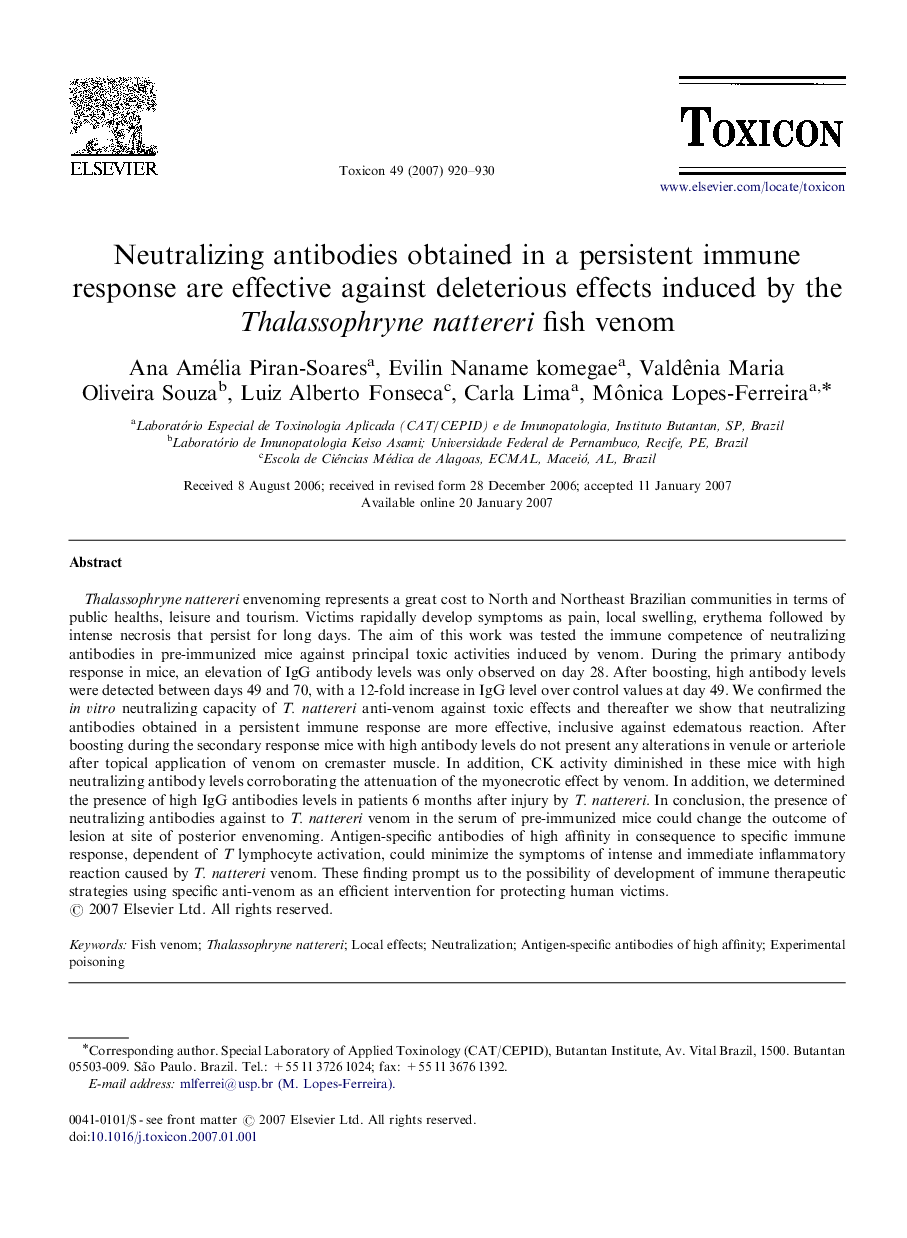| Article ID | Journal | Published Year | Pages | File Type |
|---|---|---|---|---|
| 2066834 | Toxicon | 2007 | 11 Pages |
Thalassophryne nattereri envenoming represents a great cost to North and Northeast Brazilian communities in terms of public healths, leisure and tourism. Victims rapidally develop symptoms as pain, local swelling, erythema followed by intense necrosis that persist for long days. The aim of this work was tested the immune competence of neutralizing antibodies in pre-immunized mice against principal toxic activities induced by venom. During the primary antibody response in mice, an elevation of IgG antibody levels was only observed on day 28. After boosting, high antibody levels were detected between days 49 and 70, with a 12-fold increase in IgG level over control values at day 49. We confirmed the in vitro neutralizing capacity of T. nattereri anti-venom against toxic effects and thereafter we show that neutralizing antibodies obtained in a persistent immune response are more effective, inclusive against edematous reaction. After boosting during the secondary response mice with high antibody levels do not present any alterations in venule or arteriole after topical application of venom on cremaster muscle. In addition, CK activity diminished in these mice with high neutralizing antibody levels corroborating the attenuation of the myonecrotic effect by venom. In addition, we determined the presence of high IgG antibodies levels in patients 6 months after injury by T. nattereri. In conclusion, the presence of neutralizing antibodies against to T. nattereri venom in the serum of pre-immunized mice could change the outcome of lesion at site of posterior envenoming. Antigen-specific antibodies of high affinity in consequence to specific immune response, dependent of T lymphocyte activation, could minimize the symptoms of intense and immediate inflammatory reaction caused by T. nattereri venom. These finding prompt us to the possibility of development of immune therapeutic strategies using specific anti-venom as an efficient intervention for protecting human victims.
